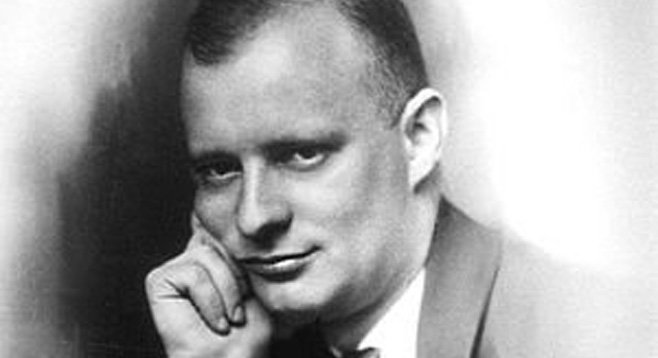 Facebook
Facebook
 X
X
 Instagram
Instagram
 TikTok
TikTok
 Youtube
Youtube

Since the last two concert weekends at San Diego Symphony have been all German affairs, this is the perfect time to start the German love-fest section of the World Cup.
The first contest is between Paul Hindemith and Ludwig von Beethoven. Let’s get to know Hindemith a little bit.
Hindemith was trained initially by his father as a musician and spent time at Hoch’s Conservatory in Frankfurt as a child. When World War I began, he was initially the bass drum player in the regimental band and also performed in a string quartet.
Hindemith wrote his second string quartet during this time but near the end of the war he faced life on the Western Front.
“Towards evening 8 bombs were thrown near the town. One hit the ammunition convoy that bivouacked 10 minutes away from us. [...] A horrible sight. Blood, bodies full of holes, brain, a torn-off horse's head, splintered bones. Dreadful! How mean and indifferent one becomes. I don't think I could have eaten or worked in peace before after seeing such a sight — and now one sits at home again, writing, chatting, in a good mood — not thinking about how soon the bell could also toll for us. — It's gradually becoming creepy here. Are we going to withdraw unharmed???”
Between the wars, Hindemith spent a lot of time visiting Cairo and Turkey where he was commissioned to organize the Turkish music education system. He also toured the United States several times as a viola soloist.
Hindemith’s music was progressive but not avant garde. He resisted the atonal movement but certainly didn’t compose in one key or another.
Hindemith emigrated to the U.S. in 1940 and taught at Yale University. He became a citizen of the United States but returned to Europe in the 1950s.
Significant compositions by Hindemith are his symphony Mathis der Maler, later turned into an opera, and his Kammermusik. His most popular piece of music for the concert hall is Symphonic Metamorphosis of Themes by Carl Maria von Weber
Of course, for purposes of World Cup of Composers, Beethoven moves on.


Since the last two concert weekends at San Diego Symphony have been all German affairs, this is the perfect time to start the German love-fest section of the World Cup.
The first contest is between Paul Hindemith and Ludwig von Beethoven. Let’s get to know Hindemith a little bit.
Hindemith was trained initially by his father as a musician and spent time at Hoch’s Conservatory in Frankfurt as a child. When World War I began, he was initially the bass drum player in the regimental band and also performed in a string quartet.
Hindemith wrote his second string quartet during this time but near the end of the war he faced life on the Western Front.
“Towards evening 8 bombs were thrown near the town. One hit the ammunition convoy that bivouacked 10 minutes away from us. [...] A horrible sight. Blood, bodies full of holes, brain, a torn-off horse's head, splintered bones. Dreadful! How mean and indifferent one becomes. I don't think I could have eaten or worked in peace before after seeing such a sight — and now one sits at home again, writing, chatting, in a good mood — not thinking about how soon the bell could also toll for us. — It's gradually becoming creepy here. Are we going to withdraw unharmed???”
Between the wars, Hindemith spent a lot of time visiting Cairo and Turkey where he was commissioned to organize the Turkish music education system. He also toured the United States several times as a viola soloist.
Hindemith’s music was progressive but not avant garde. He resisted the atonal movement but certainly didn’t compose in one key or another.
Hindemith emigrated to the U.S. in 1940 and taught at Yale University. He became a citizen of the United States but returned to Europe in the 1950s.
Significant compositions by Hindemith are his symphony Mathis der Maler, later turned into an opera, and his Kammermusik. His most popular piece of music for the concert hall is Symphonic Metamorphosis of Themes by Carl Maria von Weber
Of course, for purposes of World Cup of Composers, Beethoven moves on.
Comments